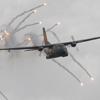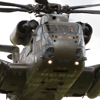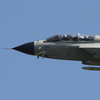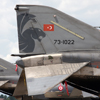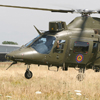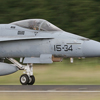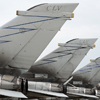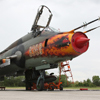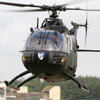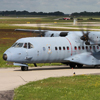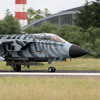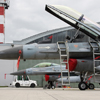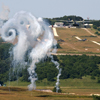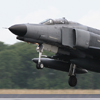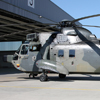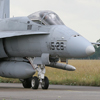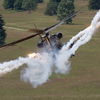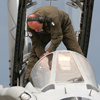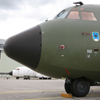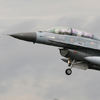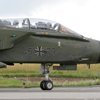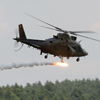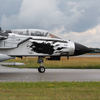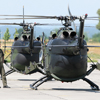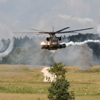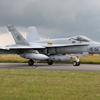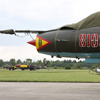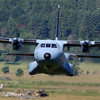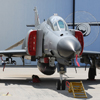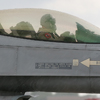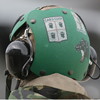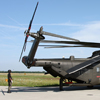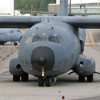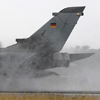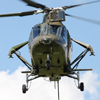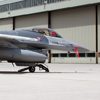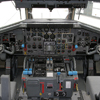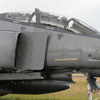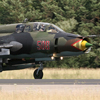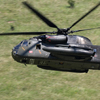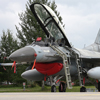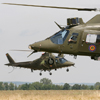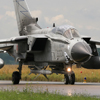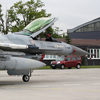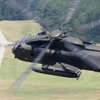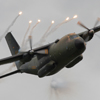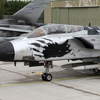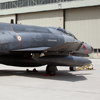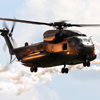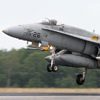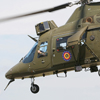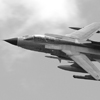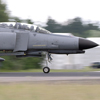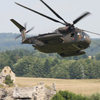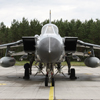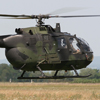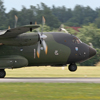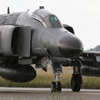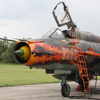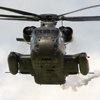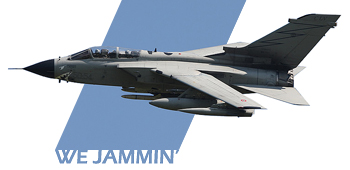
Exercise ELITE 2008 Feature Report
Friday 4th July - Thursday 17th July
Exercise ELITE (Electronic LIve Training Exercise) is designed to provide a training scenario where the main emphasis is placed upon electronic warfare for both air and ground based weapons systems. The previously annual event (the next one will be held in 2010) incorporates fast jets, transport aircraft and helicopters, and runs for two weeks in the picturesque, rolling landscape of Germany's south.
reports for UKAR. All photography by the author.
ELITE was first introduced in 1991 as merely a Wing-level exercise between the Tornadoes of JBG-32 and the Roland Surface-to-Air-Missiles (SAMs) of SAMGrp43. It was held at Leipheim air base.
Since then it has developed and grown into a German Air Force INVITEX open to NATO, EU and Partnership for Peace member nations. It is still led by the German Air Force Command, despite there being no permanent staff or infrastructure dedicated to it. The 2008 instance saw 27 nations (including NATO) involved, 18 of which provided some means of weapons system.
To give some indication of the growth of the event, in 1995 there were approximately 175 missions tasked under the ELITE banner, but by 2003 the figured exceeded 1000 for the first time, and its been sitting around the 1300 mark since 2005.
As previously mentioned, ELITE is an electronic warfare based exercise designed to improve the combat success, sustainability and survivability from real world threats. As with the Red Flag ethos, you train as you fight, which means the crews get experience of intensive training of joint and combined operations.
The technology available means that those taking part are able to measure the efficiency of the jamming and deception techniques, as well as the tactical procedures employed.
ELITE also provides the opportunity to test and develop new concepts, procedures and tactics.
For the 2008 exercise, Landsberg-Penzing played host to a Polish AF Casa C295 from 13 ELT at Krakow, and a French AF C-160 Transall from ET 03.061 based at Orleans-Bricy, as well as providing two of their own (LTG-61) C-160D Transall aircraft.
Laupheim witnessed four Belgian Defence Force Agusta A109s from Bierset, a pair of Bolkow BO-105s, a German Navy Sea King from MFG-5 at Kiel, and three resident (MTHR-25) CH-53GSs operating from there.
Lechfeld hosted four Hellenic AF F-16s, three 111 Filo Turkish AF F-4E-2020s from Eskisehir, and three 192 Filo F-16Cs from Balikesir, five Italian Tornado ECRs from 155 Gruppo, based at Piacenza-San Damiano, three Polish Su-22M Fitters from 8 ELT at Miroslawiec and three Spanish AF EF-18A+ Hornets from Ala 15 at Zaragosa. In addition the resident JBG-32 provided six ECR Tornadoes, three Recce examples and 6 IDS models.
Operating from Neuberg were four GFD operated Learjets and two FRA Dassault Falcon 20s, as well as two resident JG-74 EF2000s.
Additionally, four 52nd FW F-16s operated from their home of Spangdahlem AFB, NATO provided an E-3A from Geilenkirchen, and the French AF flew an E-3F from Avord, and a C-160G from Metz on a daily basis.
In addition to the air-based assets, 17 different types of Ground Based Air Defence (GBAD) assets were present at the Heuberg Range, located some 60 miles south of Stuttgart, including the Patriot, AFF/OZELOT, SA-6, SA-7, SA-8, Stinger, Crotale, Mistral, ROLAND, and Rapier, amongst others.
The exercise airspace extended from the south of the Stuttgart MATZ, to the north of the Munich MATZ.
Normal military operations in Germany are restricted to a 2000ft minima outside of special military controlled airspace, where 500ft is permitted. Exercise ELITE is somewhat different however, and once the aircrews have demonstrated their capabilities, they may be cleared to lower than 500ft, in some instances down to ground level within the range confines. This is one of the reasons why ELITE is so popular with the crews!
From a mission planning perspective, the focus is entirely on operator training for both the offensive and defensive forces, both of whom have the same aim, but contrary objectives.
Because of the vast (unrealistic) number of ground based threats, each mission will have a specific objective, offering no 'free play' to those taking part at all.
As you would expect, there is as much benefit to be gained from the post-mission analysis and debrief as there is from actually executing the mission itself, the aim being to improve your overall performance all the way through from the planning phase.
Because of the wide-spread location of the assets, Video-Tele-Conferencing (VTC) is the preferred method of debriefing, taking place some 130 minutes after the slot, and those taking part will have access to various ground, air and radar based media demonstrating exactly how the mission unfolded. The debrief should last a max of 25 minutes.
After the 2007 running, it was concluded that the exercise was fulfilling its objectives, and that the maximum number of weapons-systems had been reached.
2008 saw a good deal of industry based co-operation, with the trialling of the Diehl BGT FIRST (Fast Infra-Red Search and Track device), as well as the Research Establishment for Applied Science or Die Forschungsgesellschaft für Angewandte Naturwissenschaften (FGAN).
So the cost of hosting the exercise means there will be no ELITE in 2009, but maybe after a year's break 2010's will be even bigger and better.

